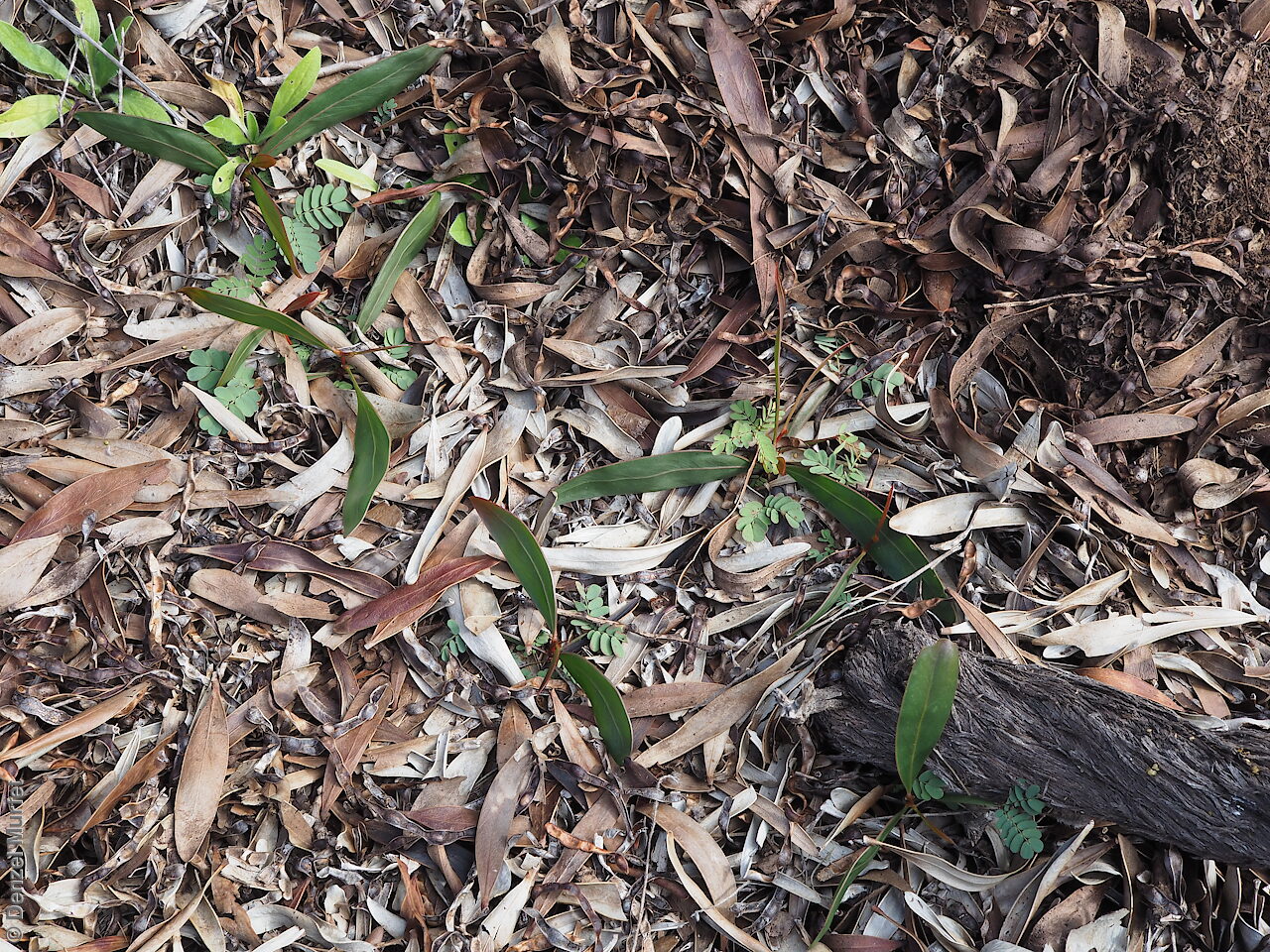















Botanical art
Prior names
Acacia beckleri, partly
Racosperma beckleri, partly
Acacia gladiiformis, partly
Common names
Barrier Range Wattle
Beckler's Rock Wattle
Etymology
Acacia from the Greek 'akakia' and derived from 'ake' or 'akis 'meaning a sharp point or thorn and 'akazo' meaning to sharpen. Dioscorides, the Greek physician and botanist used the word in the 1st century AD for the Egyptian thorn tree, Acacia arabica. Beckleri named for Hermann Beckler, early 20th century German-born doctor and botanist who accompanied the Victorian Exploring Expedition including the Burke and Wills Expedition.
Distribution and status
Found on Eyre Peninsula (mainly Gawler Ranges area) and Flinders Ranges to Boolcoomata in the Eastern region, growing mainly on stony hillsides associated with tall or low shrubland vegetation, in mainly shallow compact loamy soil. Also found in New South Wales. Native. Common in South Australia. Common in New South Wales.
Herbarium regions: Gairdner-Torrens, Flinders Ranges, Eastern, Eyre Peninsula, Murray
NRM regions: South Australian Arid Lands, South Australian Murray-Darling Basin
AVH map: SA distribution map (external link)
Plant description
Straggly or erect, compact, bushy shrubs to 3 m high, often with a spread greater than its height and branching near ground level. Stem smooth, reddish-brown and slightly glaucous. Leaves thick, narrow-elliptic to 17 cm long and 22 mm wide, straight or falcate. Inflorescences axillary racemes much shorter than leaves with large, globular, deep yellow flower-heads. Flowering between July and October. Fruits are dark brown broad and flat pods to 11 cm long and 6 mm wide, raised over the seeds. Margins thickened, slightly constricted between the seeds. Seeds are hard, black oblong to elliptical seed to 5 mm long and 2.5 mm wide. Seed embryo type is investing.
Seed collection and propagation
Collect seeds between October and January. Collect mature pods that are turning brown with hard, dark seeds inside. Place the pods in a tray and leave to dry for 1-2 weeks or until the pods begin to split. Then rub the dried pods to dislodge the seeds. Use a sieve to separate any unwanted material. Store the seeds with a desiccant such as dried silica beads or dry rice, in an air tight container in a cool and dry place. From two collections, the seed viability was high, at 80% and 100%. This species has physical dormancy that needs to be overcome for the seed to germinate (e.g. nicking or softening the seed coat).
| Location | No. of seeds (weight grams) | Number of plants | Date collected | Collection number Collection location | Date stored | % Viability | Storage temperature |
|---|---|---|---|---|---|---|---|
| BGA MSB | 2,900 (54.23 g) 2,900 (54.23 g) | 30 | 2-Nov-2009 | TST852 Eyre Peninsula | 1-Jun-2010 | 100% | -18°C |
| BGA | 870 (8.4 g) | 7 | 29-Nov-2013 | KHB723 Flinders Ranges | 24-Mar-2015 | 85% | -18°C |
Number of plants: This is the number of plants from which the seeds were collected.
Collection location: The Herbarium of South Australia's region name.
% Viability: Percentage of filled healthy seeds determined by a cut test or x-ray.